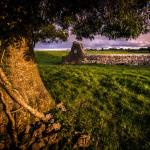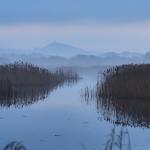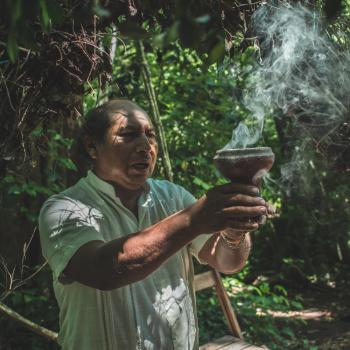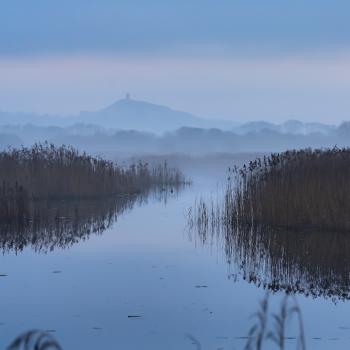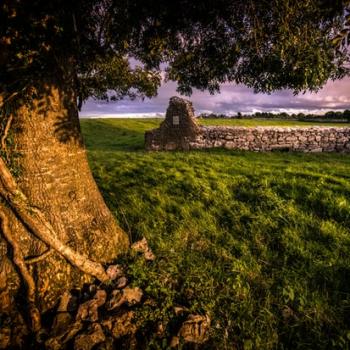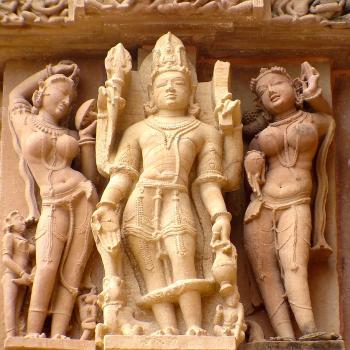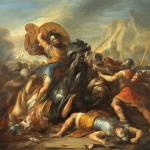A journey to Samothrace is a transformational journey both outwards and inwards.
Samothrace (pronounced Samothraki) is a well kept secret in the Aegean. Thankfully, due to its lack of easily accessible sandy beaches, it has evaded mass tourism and this is one of its alluring calling cards. If you like the idea of visiting an island with wild, sustainable, soul stirring beauty, shrouded in myths and the mysteries is appealing to you, then keep reading.
Travelling to Samothrace is a pilgrimage, because it’s not an easy place to visit. The turbulent waters are dangerous for seafarers, even more so in ancient times. From a distance you can see a volcanic island with a pyramid-like mountain top, often veiled by clouds.
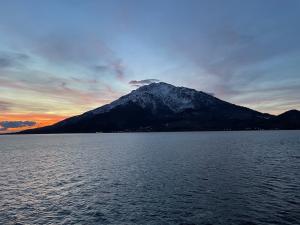
Picture: the Samothrace pyramid.
For a lucky few of us, the magnetic pull of Samothrace is intense. If you’re sensitive to energy, you’ll feel the island’s energy from the mainland. The very first time I went to Samothrace I had to completely chill out and turn my attention inwards. I could feel the island luring me over to it and I had to take my time to get myself into the a receptive state to be able to go there. Why is this? if you go to Samothrace with highly strung chaotic energy, the island will make you slow down by literally sweeping you off your feet. It is important to align yourself with the island and then nurture yourself in nature when you get there.
Samothrace is rich with secret waterfalls, lush gorges, secluded coves and mountain trails. Samothracians are proud of their unspoilt island and do their utmost to defend her from wind farm proposals and large developments. Unlike other Aegean islands Samothrace has 23 different habitat types, the nooks and crannies host a multitude of microclimates. The southern facing side of the island has more Aegean habitats with dry olive groves. Whereas, the north facing side of the island is more humid with rich green deciduous valleys, comprising of plane, oak, cedar, and chestnut trees.
Dispersed across the slopes of the mountain and nestled in gorges are vathres, which are waterfalls that plunge into rock pools. The pure cool crystalline water makes you feel alive, ready for more hiking. The vathres are otherworldly and if you visit in summer the friendly blue green dragonflies are delightful.
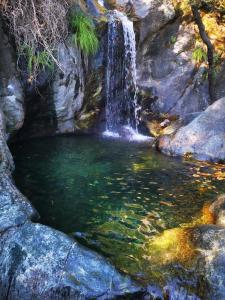
Picture: magical vathre
The Sanctuary of the Gods
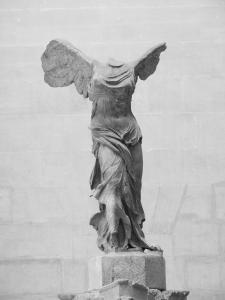
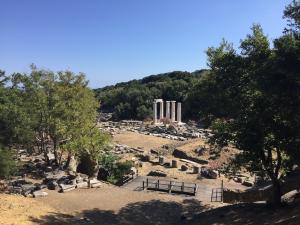
Picture left: the Goddess Nike presided over the Sanctuary of the Gods.
Picture right: a view of the site from where the Goddess Nike stood.
Samothrace is one of the most powerful energy sites in Greece. Located on the northern side of the island is the Sanctuary of the Gods and this is where the ancient initiations into the mysteries took place. The initiations occurred even prior to the Greek occupation, carrying forward into the Roman period until the temples were closed by decree of the Christian Emperor Justinian in the sixth century A.D. It is believed that initiates were required to prepare themselves on the mainland before making the voyage across to the island. The key to this preparation was purification of body and mind.
From the museum a wooded path meanders alongside a stream leads to the modern entrance to the site. This isn’t the path the initiates took. Initiates arrived at the eastern gate with a vast view from above most of the site. As you walk around the site it’s easy to be sense you are being transported to ancient times and unexpected feelings may arise. Out of season you’ll have the place to yourself, so spend time here, lie down and breathe in its secrets.
The names of the Gods that were venerated were kept secret. It has been suggested that they could have been the Cabeiroi (Κάβειροι) who were venerated on the nearby island of Lemnos. What is known, is that the cult of the Great Gods at Samothrace involved the worship of several divinities. Coins found during excavations at the sanctuary were dated to the second-century B.C. depict a great mother Goddess. The mother Goddess energy is palpable today and the Cabeiroi will keep you in check.
Presiding over the sanctuary was a statue of the Goddess Nike, which was a much later addition to the site. It is likely that she was erected to recognise a battle won at sea. Because of this, travellers and mariners would bring offerings in the hope of securing a safe passage whilst at sea. The apostle Paul arrived in Samothrace in 49AD, Act 16:11, possibly to make an offering or maybe he was initiated. The statue is powerful and graceful, her dress is fluidly draped and the statue currently resides in the Louvre museum in Paris.
The Sanctuary of the Great Gods is where the mysterious rites took place. Most importantly, they were open to everyone, not just elite men. Eleusius is the better known mystery site, which is located close to Athens.
Only allusions to what happened in the initiations exist. It is known that the initiation ceremony in Samothrace is likely to have had two stages: myesis (μύησις) the first stage of initiation and epopteia (εποπτεία) for those who have ‘seen’. They occurred at night, so the initiates went into darkness, perhaps they experienced a level of fear or shock and then there was illumination. They were initiated into the light, sometimes referred to as being illuminated by the midnight sun. This could have been a pineal activation or an experience of bliss of the afterlife. In either case it was a death of the materially focussed persona and then a rebirth. This idea of death and rebirth continued into the early Christian period. When death of the inferior occurs, the superior finds birth and the gateway to divine inspiration was opened.
Samthrace is located in the northern Aegean and accessed by ferry from the port town of Alexandroupolis, 300km east of Thessaloniki.



